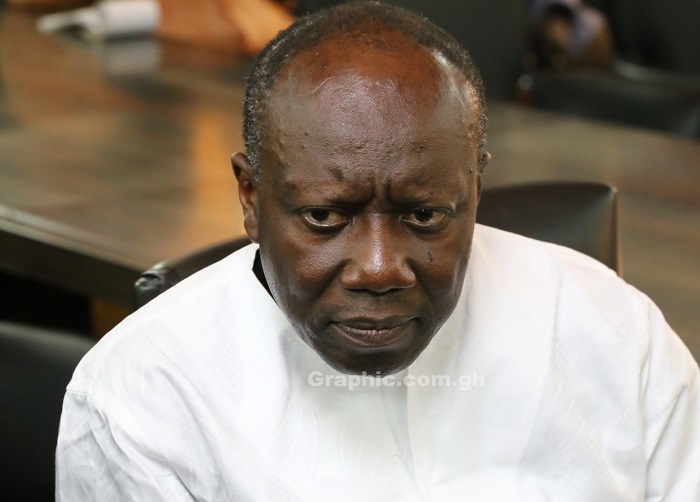
Govt scouts for GH¢10bn bond
The Ministry of Finance has opened informal discussions with some institutional investors to help gauge appetite for Ghana’s debt ahead of a GH₵10 billion bond later in the year.
Advertisement
The discussions are done concurrently with the search for a transaction advisor(s), who will facilitate the processes leading to the issuance of the cedi-denominated bond.
The transaction advisor(s) is expected to lead the entire process, from the documentation through recruitment of professionals to the determination of the contract terms and drafting of the legal regime to guide the bond.
Proceeds of the bond, to be backed by portions of receivables from the Energy Sector Levy Act 2015, (Act 899), are to be used to finance some US$2.5 billion debt overhang in the energy sector, where years of liabilities had stifled reinvestments in the owing companies and subdued the profits of their creditors.
Thus, a successful payoff of the debts should help free the books of the three power sector debtors – the Volta River Authority (VRA), the Electricity Company of Ghana and the Ghana Grid Company (GRIDCo) – to be able to stand on their feet again and reinvest to improve generation, transmission and distribution.
It will also create flexibility in their finances because their operational capacities had been weakened by what has now been christened the ‘Legacy Debt.’
The President of the Ghana Association of Bankers (GAB), Mr Alhassan Andani, said the payoff would amount to recapitalising the debtors.
“The economy is already bearing the burden of that debt service through ESLA because that levy is accruing to date. Now what the bond will do additionally is, it will help us to take the debts off those institutions, then they will become much stronger.”
“And if you take the repayment phase one and phase two together, it will be as if government has recapitalised them by that amount. On the converse side, it means government has reintroduced equity of that value into them and they should now be robust to run efficiently,” he said.
Although the government is yet to determine the duration of the bond, the President of the Ghana Association of Bankers (GAB), Mr Alhassan Andani, said the steady flow of proceeds from ESLA showed that the debt “can be taken off over five years to seven years maximum.”
List of creditors
Although a repayment structure had been agreed with creditor banks, led by the GAB, and is now implemented to the letter, the GRAPHIC BUSINESS understands that a chunk of the GH₵10 billion issue will be used to finance the second phase of the Legacy Debt. Majority of those creditors are fuel traders, who have supplied petroleum products on credit to the VRA, Tema Oil (TOR) Refinery and the Bulk Oil Storage and Transportation Company (BOST).
“At the moment, this phase two of the repayment is more than 80 per cent traders. Even the financial institutions that will be in phase two will not be domestic institutions,” a source familiar with the process told the paper in confidence.
“There were some banks whose debts were secured by some export receivables from VRA and those banks were not in the phase one banks. I think CAL Bank and Fidelity Bank had their exposures earmarked to export receivables and so if they (the government) now want to bring these on board in other to free up those cash flows, then we can have banks involved otherwise, then the phase two will be full of suppliers,” the source explained.
Under the phase one, which saw some creditor banks take a GH₵300 million haircut, the government agreed to make quarterly payment for the debts over the next five years ostensibly to clear the debt and return the banks and the owing companies to a sound financial base.
So far, four tranches of the repayment have been made with the third quarter payment due to be made next month.
Time factor
Given the impact of the debt on the debtors, their creditors and the economy in general, an economic analyst with Databank, Mr Courage Kwesi Boti, said the bond needed to be issued “as soon as possible” to help clear the debt and alleviate the burden that it placed on the financial and energy sectors.
“Because the cash flow involved (proceeds from ESLA) is something of a legality, it might take a lot of consideration; looking at the law, what it can and cannot be done,” Mr Boti said in reference to Act 899, which created the Energy Sector Levy.
“Yes, it (the bond issue) has to go through the due process, but left to me, it should be done as soon as possible,” he said.
Earlier, Mr Boti had blamed the minimal impact of Bank of Ghana’s rate cut in March, this year, on the high delinquent loans in the banking sector. With majority of those loans originating from the power and downstream petroleum firms, he said efforts to clear them needed to be hastened to help ensure that the balance sheets of banks were strengthened to pass on the gains from a loose monetary regime to businesses through increased loans and advance and low rates.
Creation of SPV
In a document released on May 26, the Ministry of Finance explained that the issuance process of the GHS10 billion bond was to be done under a special purpose vehicle (SPV) that the ministry and the transaction advisor(s) will be creating to help spearhead the process.
This means that unlike previous bonds, the GH¢10 billion bond will not be in the books of the government but will be backed by receivables from the ESLA, which has so far been steady. — GB




